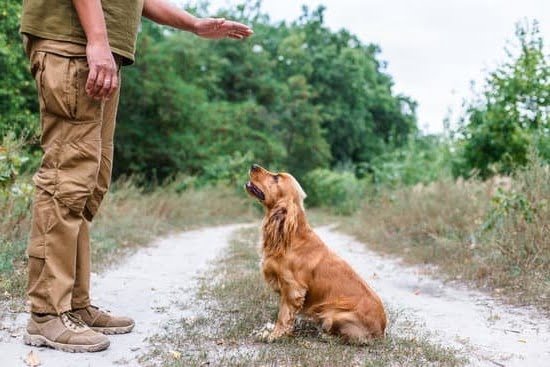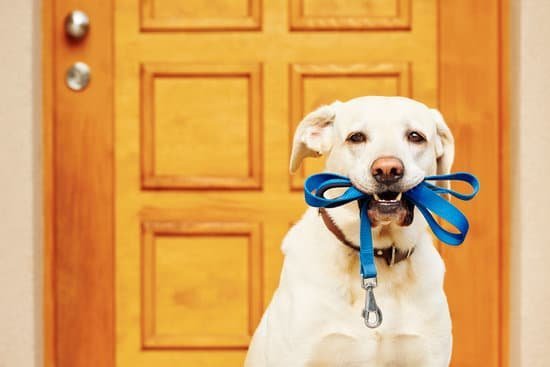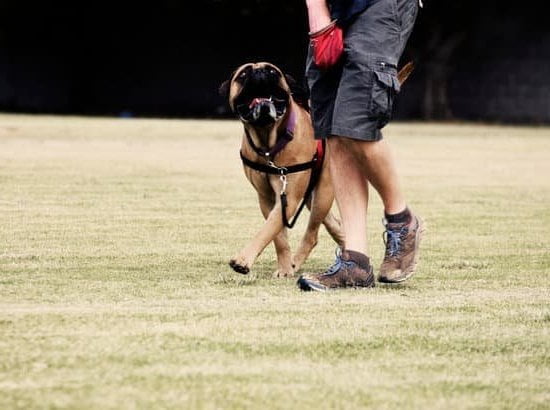Introduction
Adopting an already trained dog as a pet and companion is becoming increasingly popular. Animal rescue centers, shelters, and even private breeders have many wonderful animals ready for adoption. Although these animals will have varying degrees of training, some may have never seen the inside of obedience class. There are several advantages to getting an already trained dog over one that requires additional training. When looking into an already-trained puppy or dog, it is important to consider the benefits.
Benefits:
One huge benefit of getting an already trained dog is that they often come with basic manners and obedience knowledge. This cuts down on the amount of effort needed to teach simple commands such as sit-stay, leave/drop it, come when called etc. This makes it easier for pet owners who do not wish to spend months teaching their new adopted pup how to behave properly around people and other pets. For those looking for a more formalized obedience routine with their adopted pups or dogs, many animal rescues often provide pre-training programs which involve regular one-on-one sessions with professional trainers. Additionally, having an adopted animal who has some understanding of commands greatly reduces the chances of behavior issues in the future; something many pet owners worry about when adding a new furry family member to their home.
Another great benefit of adopting an already trained puppy or dog is that they can usually hit the ground running in terms of adjustment time. Not only does this make life easier for the pet parents but also for the pet itself by reducing initial stress levels common with adoptions and transitions into a new home environment. Such positive experiences can lead to happy relationships between both parties and promote emotional bond formation which increases feelings of well being in both human and canine alike!
The Pros and Cons of Adopting an Already Trained Dog
Pros:
Adopting a pre-trained dog is a great option for those who don’t have the time or patience to train their dog themselves. You could recognize most of the commands; use them to help your pup settle in their new environment faster, and ensure that your home remains safe and orderly. The transition will be much smoother than teaching the commands from scratch since they are already familiar with the commands. This can save you a tremendous amount of time and frustration.
Another advantage of adopting an already trained dog is that it’s usually much easier going into the adoption process because you know what you’re getting yourself into. Having information about how the dog behaves can ease any worries about bad behaviors as well as eliminate any surprises down the line.
Cons:
The biggest downside of taking on a pre-trained dog is not knowing exactly who did their training and how effective it was. If you adopted from a rescue group or shelter, there might not be any information available about past training lessons. Consequently, there may be some hidden bad behaviors or misbehaviors you are unaware of that could surprise you later on in the road. You never know if they were taught something inappropriate or if they developed bad habits with lack of reinforcement over time.
Additionally, it’s entirely possible that whoever trained your pup before you did it incorrectly and used punishment systems without adding positive reinforcement, which end up leaving gaping behavioral problems behind them. This could mean extra work down the line undoing negative associations they had previously learnt before being brought into your home
Training an Already Trained Dog
Getting an already trained dog as a companion can be a great choice. This is because the bond between you and the dog will be established quickly and there won’t need to be an extensive training period to get your pup up to speed. However, having an already trained dog does not mean that all of your work is done. It’s important to understand some common strategies and techniques when it comes to retraining already trained dogs so that you can continue building on the foundation that has already been established.
One main technique in re-training already trained dogs is consistency. Working with your pup on training drills each and every day will help it retain its foundational skills as well as build new ones. Repetition aids in learning, so doing short 20-minute training sessions every day of the week rather than one long session once per week can result in better outcomes overall. Praise and treats belp too – reward-based learning helps reinforce good behavior with positive reinforcement, which encourages the pup to keep up its good habits even without prompting.
It’s also critical when re-training an already trained dog that they are given plenty of breaks throughout their session – which includes both physical activity break and mental stimulus breakd -so they can stay engaged and excited about what they are learning while avoiding burnout caused by overstimulation or exhaustion. Additionally, make sure that expectations are realistic for how long memorizing complex commands may take; this varies depending on breed and age, but dogs can become overwhelmed if asked for too much too soon so give them time!
Finally, form a consistent pattern when it comes to appropriate correction techniques; if your pup makes a misstep during re-training, gently discourage it from repeating the behavior without issuing punishment or getting angry. Utilizing positive reinforcement methods such as treats will help communicate what is expected from them more effectively than just scolding or yelling ever could which makes this strategy far more effective in solidifying behaviors for the long term.
Potential Challenges With an Already Trained Dog
Yes, you can get an already trained dog as a companion. Many experienced pet owners or experienced volunteers are familiar with training and understanding the behaviors of a variety of animals. They often adopt or rescue dogs with basic commands and social cues already in place.
However, there may be some potential challenges to consider when opting for an already trained dog as a companion. For instance, the older dog may have had prior experiences that created learned behaviors that could be hard to unlearn. As such, patience, consistency and positive reinforcement will often be required when working with an already trained dog. Additionally, it is important to remember that dogs respond best to positive reinforcement training techniques rather than negative ones; any discipline should never include scolding, yelling or physical punishment. Finally, since dogs thrive on routines and schedules; introducing too many changes too quickly could create anxiety and confusion in the new family dynamic–causing further behavior issues down the track.
Tips for Choosing the Right Already Trained Dog for You
Yes, it is possible to get an already trained dog as a companion. Depending on your lifestyle and preferences, there are a variety of breeds and temperaments that can be a great fit for you.
When choosing the right already trained dog for you, there are several factors to consider. First, look into the breed – some breeds may not be compatible with your living situation or lifestyle. Knowing the activity level requirements of each breed can also help you choose the right fit. Consider how much training they have had – dogs who have completed obedience classes will likely require less behavioural management than those who are still in the process of training. Additionally, research potential medical issues that are common with each breed, such as hip dysplasia or allergies.
Also think about its personality and try to find one whose energy matches yours – if both of you enjoy long walks, having a high-energy pup will work well for you! Make sure to ask any questions before bringing a new pup home so that you understand what kind of behaviour is expected from them. Finally, ask yourself if this breed will be able to offer you companionship and fulfilment for many years to come – selecting a reliable companion is key!
Debunking Common Myths About Adopting an Already Trained Dog
Yes, you can get an already trained dog as a companion. While it might be true that adopting a pet from an animal shelter can be a rewarding experience, adopting an already trained dog can be even more so. Too often, people shy away from this option because of myths about adopting a pre-trained pet.
Common myths about pre-trained dogs include: they don’t bond with their new families and that the training is not up to par. While the former may have some truth in it (as any animal will take time to adjust to its new home), there are many shelter locations that now offer dogs already completely trained by professional trainers before adoption. These animals are typically litter box and house broken and understand basic commands such as “sit,” “come,” and “stay.”
Additionally, depending on the type of training done with the pet beforehand, it may have gone as far as being taught how to use specific vocal commands or perform certain tasks such as helping out disabled owners. By getting to know your canine companion’s history prior to adoption, you will quickly learn what training or skillset your pup possesses so that you can continue on with their education if necessary. With enough patience and attention, these pre-trained personalities can become just as loyal and loving towards their newly adopted family as any other pup!
Important Questions to Ask Before You Adopt
Yes, it is possible to get an already trained dog as a companion. If you are considering adopting a dog that has already been trained, there are some important questions to ask before doing so. These include: What sort of training has the dog had? Has the previous owner consistently applied their training methods? Has the dog been given obedience tests or certified by any organizations such as the American Kennel Club? How long has the dog been in its current environment? Are there any health issues that need to be addressed before bringing a new pet into your home? Is the current owner willing to provide detailed records of what they have done with the dog? Answers to these questions can help you make an informed decision when choosing a companion and determine if they will be able to fulfill your companionship needs.
Conclusion
Yes, you can get an already trained dog as a companion. Depending on the age of the dog, they may already have some tricks or commands that they understand. In some cases, they may even be potty trained or know how to open doors and turn on lights. This means that if you are looking for an already trained dog as a companion, it is possible to find one.
No matter the age or training of your pet, a successful long-term companionship requires dedication and regular care from the owner. Ensure that you have adequate time for exercising and playing with your four-legged friend if you want them to stay healthy and happy for many years. Spend time researching what breed best fits your lifestyle, make sure to visit multiple breeders prior to selecting a puppy/dog so you can pick one with calm temperaments and good habits. Additionally, vet visits should be regular and ongoing to help ensure that your friend stays healthy throughout their life. With these steps taken and regular communication with your family veterinarian there’s no doubt that you’ll be able to enjoy a long and lasting relationship with your new four-legged friend!

Welcome to the blog! I am a professional dog trainer and have been working with dogs for many years. In this blog, I will be discussing various topics related to dog training, including tips, tricks, and advice. I hope you find this information helpful and informative. Thanks for reading!





